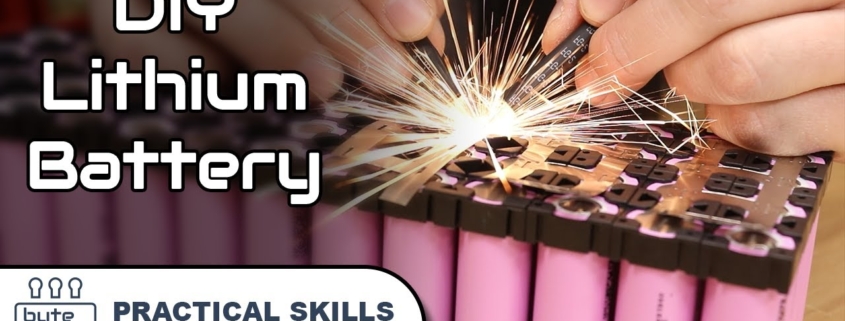How to Make 18650 Battery Pack: Ultimate DIY Guide
Want to build your own custom power solution? Learning how to make 18650 battery pack is easier than you might think. In this comprehensive guide, as a professional 18650 battery pack manufacturer, I’ll walk you through everything you need to know to create a reliable, high-performance battery pack using 18650 lithium-ion cells.
I’ve spent countless hours researching and testing different methods, and I’m going to share the exact step-by-step process that actually works in 2025.
Let’s dive in.

Why Build Your Own 18650 Battery Pack?
Custom battery packs give you complete control over:
- Capacity: Build exactly what you need
- Voltage: Configure for your specific device
- Form factor: Design to fit your space constraints
- Cost: Save money compared to pre-built options
- Jakość: Use premium cells for better performance
Plus, there’s something incredibly satisfying about powering your devices with something you built yourself.
How to Make 18650 Battery Pack?
Essential Safety Equipment
Before touching a single battery, get these safety items:
- Safety goggles
- Electrical gloves
- Fire-resistant work surface
- Fire extinguisher (rated for electrical fires)
Never skip on safety equipment. Even quality 18650 cells can be dangerous when mishandled.
Selecting the Right 18650 Cells
This is perhaps the most critical step in building a quality battery pack.
Here’s the truth: not all 18650 cells are created equal.
You’ll find countless options ranging from $1 to $10 per cell, but here’s what you need to know:
Stick with reputable brands. I strongly recommend cells from Panasonic, Samsung, Sanyo, and LG. These manufacturers have excellent quality control and well-documented performance characteristics.
Avoid cheap knockoffs. Stay away from brands with “FIRE” in the name (Ultrafire, Surefire, Trustfire). These are often factory rejects repackaged in fancy wrappers. They advertise capacities up to 5000mAh but typically deliver only 1000-2000mAh. Worse, they pose a significant explosion risk when charging or discharging.
For my own projects, I use Panasonic 18650B cells with 3400mAh capacity. They cost more upfront but deliver reliable performance over time.
Understanding Battery Configurations
Before building, you need to understand two fundamental configurations:
Series connection: Increases voltage while maintaining the same capacity
- Example: Four 3.7V cells in series = 14.8V with the same mAh rating
Parallel connection: Increases capacity while maintaining the same voltage
- Example: Four 3.7V/3400mAh cells in parallel = 3.7V with 13,600mAh
Most useful battery packs use a combination of both (series-parallel) to achieve desired voltage and capacity.
Critical Design Considerations
Determine load current requirements first. This is absolutely essential because it affects:
- Wire gauge selection
- Number of cells needed
- Heat management requirements
- BMS (Battery Management System) specifications
The current your device draws directly impacts how you’ll design your pack.
Consider balance issues. When connecting cells in series, they should be within 0.1V of each other. This is especially important with used cells but worth checking with new ones too.
Step-by-Step Building Process
Step 1: Design Your Configuration
Start by answering these questions:
- What voltage does your device require?
- How much capacity (runtime) do you need?
- What’s your maximum current draw?
For example, if you need a 12V battery with approximately 6800mAh capacity:
- 3 cells in series = 11.1V (close enough to 12V for most applications)
- 2 parallel groups = 6800mAh (3400mAh × 2)
- Total configuration: 3S2P (6 cells total)
Step 2: Test All Cells
This step is non-negotiable. Before building:
- Charge all cells fully using a quality Li-ion charger
- Measure and record the voltage of each cell
- Group cells with similar voltages (within 0.1V)
- For premium results, measure actual capacity using a battery analyzer
Step 3: Prepare Your Materials
Gather these essential items:
- 18650 battery holder or create a custom holder
- Nickel strip (0.15mm thick minimum)
- Spot welder (preferred) or specialized soldering equipment
- Insulation materials
- BMS (Battery Management System) appropriate for your configuration
- Wiring and connectors
- Heat shrink tubing
Step 4: Connect the Cells
Important: Never solder directly to 18650 cells. The heat can damage the internal safety mechanisms. Always use a spot welder or pre-tabbed cells.
- Arrange cells according to your design
- Connect parallel groups first using nickel strips
- Connect the parallel groups in series
- Add insulation between cell groups to prevent shorts
Step 5: Install the BMS
The Battery Management System is crucial for:
- Overcharge protection
- Over-discharge protection
- Short-circuit protection
- Balancing cells during charging
- Connect the BMS balance leads to each series connection
- Connect the main positive and negative leads
- Insulate all connections carefully
Step 6: Final Assembly and Testing
- Measure voltage at the output terminals to verify correct configuration
- Insulate the entire pack with fish paper or Kapton tape
- Wrap with heat shrink tubing for mechanical protection
- Perform a low-current test charge and discharge to verify functionality
- Test with the intended device under supervision
Troubleshooting Common Issues
Pack doesn’t charge: Check BMS connections and verify cell voltages aren’t too low for the BMS to activate.
Reduced capacity: Likely caused by imbalanced cells or one weak cell in a parallel group.
Pack overheats: Could indicate excessive current draw, insufficient wire gauge, or poor connections between cells.
Creating a Robust Battery Housing
For durability and safety, consider:
- 3D printing a custom enclosure with proper ventilation
- Adding foam padding to prevent movement
- Including a temperature sensor for monitoring
- Designing easy access for future maintenance
Maintaining Your DIY Battery Pack
- Charge it regularly, even during storage
- Store at 30-50% charge if not using for extended periods
- Keep in cool, dry conditions
- Avoid complete discharge whenever possible
- Check connections periodically
Przemyślenia końcowe
Building your own 18650 battery pack is incredibly rewarding. Not only do you get a custom power solution, but you gain valuable skills and knowledge.
Remember these key points:
- Always prioritize safety
- Use quality cells from reputable manufacturers
- Take time to design properly before building
- Include a quality BMS
- Test thoroughly before regular use
With the steps outlined in this guide, you now have everything you need to know about how to make 18650 battery pack configurations that are safe, reliable, and perfectly tailored to your needs.
Have you built your own battery pack? What challenges did you face? Let me know in the comments below!








